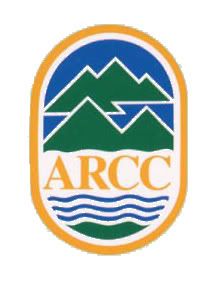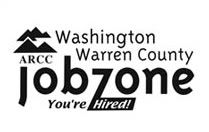Arrow Financial Corporation (NasdaqGS® – AROW) announced operating results for the three and twelve-month periods ended December 31, 2009. Net income for the 2009 fourth quarter was $5.1 million, representing diluted earnings per share (EPS) of $.47, an increase of $.01, or 2.2%, from the diluted earnings per share of $.46 in the fourth quarter of 2008, when net income was $5.0 million. For the 2009 year, net income of $21.8 million represented a new record high for the Company in its 158 year history of providing banking services in the northeastern region of New York State. Diluted EPS for 2009 of $1.99 was 6.4% higher than the diluted per share amount of $1.87 earned in the prior year, when net income was $20.4 million. The comparative results for the three and twelve-month periods were affected by certain significant transactions, discussed further in this release. Cash dividends paid to shareholders in 2009 equaled $.98 per share, or 3.2% higher than the $.95 dividend paid in 2008. All per share amounts have been adjusted to reflect the effect of the 3% stock dividend distributed on September 29, 2009.
Thomas L. Hoy, Chairman, President and CEO stated, “In light of the challenging environment confronted by the financial services industry throughout 2009, we are pleased to report record earnings and continued growth of the franchise. Our concentration on the fundamentals has allowed the Company to achieve double-digit growth rates in several key balance sheet categories, resulting in record levels in period-end amounts for assets, deposits and capital levels. Furthermore, our asset quality remained strong at year-end, as measured by low levels of nonperforming assets and very low charge-off levels in spite of the difficulties currently experienced in the banking and financial markets.”
Total assets at December 31, 2009 reached a record high of $1.842 billion, up $176.5 million, or 10.6%, over the December 31, 2008 balance of $1.665 billion. Deposit balances at December 31, 2009 were $1.444 billion, representing an increase of $168.5 million, or 13.2%, from the December 31, 2008 level of $1.275 billion. Capital balances at December 31, 2009 were $140.8 million, representing an increase of $15.0 million, or 11.9%, from the December 31, 2008 level of $125.8 million. The capital ratios of the Company and each subsidiary bank were substantially above the “well capitalized” regulatory standard.
Average assets rose to $1.761 billion in 2009 versus $1.644 billion for the prior year, an increase of 7.1%. The growth in average assets reflected an increase of $30.4 million in average loan balances, an increase of $56.0 million in average investment securities balances and an increase of $33.5 million in the average balance of short-term funds. However, loan balances outstanding at December 31, 2009 were $1.112 billion, only modestly above the balance of $1.110 billion at December 31, 2008.
Although we experienced a continuing weakness for consumer loan demand, primarily indirect automobile loans, and the demand for business loans has softened in recent periods due to the economic environment, we continue to lend to credit qualified individuals and businesses within our market area. Demand for mortgage loans (including both new purchase money and refinancings), however, has been favorable during 2009, due to prevailing low interest rates, more affordable home prices and tax incentive programs. We closed $91.9 million of residential mortgages, an increase of $33.8 million, or 51%, from the origination volumes experienced during 2008. However, for interest rate risk management purposes, many of these low fixed rate residential mortgage loans originated during 2009, were sold in the secondary market and, as a result, were not reflected in outstanding loan balances at year-end.
Net interest income for the twelve-month period was favorably impacted by an increase in average earning assets, which increased $119.8 million, or 7.6%, to $1.688 billion for 2009 as compared with $1.569 billion for 2008. Net interest margin for 2009 was 3.76%, slightly below the 3.84% for 2008. During 2008, the targeted federal funds rate fell from 4.25% to a range of 0% to .25%, where it stayed for all of 2009. Our decision to emphasize a very conservative liquidity profile in 2009 did come at a cost of very low yields on the related earning assets, which in turn, contributed to the narrowing net interest margin.
As previously reported, certain significant transactions in the first two quarters of 2009 and in 2008 had a significant impact on earnings for both years. Some of these transactions negatively affected earnings; others had a positive effect. In the second quarter of 2009, the Company’s subsidiary banks, like all FDIC insured financial institutions, were subjected to an FDIC special assessment to support the FDIC’s insurance fund. We expensed $475 thousand, net of tax, in the second quarter of 2009 for this assessment. Also during the second quarter of 2009, we received unexpected income in the form of a court-ordered restitution payment of $272 thousand, net of tax, from a former customer of our now-dissolved Vermont subsidiary bank. In the first quarter of 2009, we transferred our merchant bank card processing to TransFirst LLC. The transfer generated an after-tax net gain of $1.79 million which was recognized in the first and second quarters of 2009. Taken together, these three significant transactions had a positive impact on EPS of $.14 for 2009.
In the first quarter of 2008, as we previously reported, after Visa completed an initial public offering (IPO) of its Class A common shares, Visa redeemed a portion of our holdings of Visa’s Class B common shares. This transaction increased net income by $637 thousand after-tax and increased diluted EPS by $.06 in 2008.
The failure rate for financial institutions in 2009 rose to levels last seen more than 15 years ago, primarily as a result of their holdings of subprime or poor-quality mortgage loans, as well as investment securities backed by pools of such loans. We have never engaged in the origination of subprime or other non-traditional mortgage loans as a business line, nor do we hold mortgage-backed securities backed by such mortgages in our investment portfolio. Mortgage-backed securities held by the Company are comprised of pass-through securities backed by conventional residential mortgages and guaranteed by government agencies or government sponsored entities. The Company does not invest in any private-label mortgage-backed securities or securities backed by subprime, or other high risk non-traditional mortgage loans. Our commercial, residential real estate and indirect consumer loan portfolios experienced no significant deterioration during 2009, even though the communities we serve, like all areas of the U.S., have been negatively impacted by the recession. However, if the economic downturn continues or worsens, we may be negatively impacted by the recession to a greater degree in the future.
Our nonperforming loans were $4.7 million at December 31, 2009, which represented .42% of period-end loans, up 7 basis points from the .35% ratio at December 31, 2008. Nonperforming assets were $4.8 million at December 31, 2009, representing .26% of period-end assets, down 4 basis points from the .30% ratio at December 31, 2008. Net loan losses for 2009, expressed as an annualized percentage of average loans outstanding, were .09%, still low by industry averages but up slightly from .07% for 2008. Arrow’s allowance for loan losses amounted to $14.0 million at December 31, 2009, which represented 1.26% of loans outstanding, an increase of 6 basis points from our year-end 2008 ratio.
Following a recovery in the capital markets, assets under trust administration and investment management at December 31, 2009 rose to $867.2 million, an increase of 14.8% from the prior year-end balance of $755.4 million. Despite this very favorable and substantial move in the year-over-year market value of such assets, the market value, which is the primary factor that impacts our income from fiduciary activities, was on average higher in 2008 than in 2009 and led to a $454 thousand decrease in the related fee income for 2009 as compared to 2008. Included in assets under trust administration and investment management are our proprietary mutual funds, the North Country Funds, advised exclusively by our subsidiary, North Country Investment Advisers, Inc., with total assets of $213.5 million at December 31, 2009, an increase of 18.6% from the balance a year ago.
In recent periods, many of our operating ratios have compared very favorably to our peer group, consisting of all U.S. bank holding companies having $1.0 to $3.0 billion in assets as identified in the Federal Reserve Bank’s “Bank Holding Company Performance Report” (FRB Report). The most current peer data available in the FRB Report is for September 30, 2009 in which our annualized year-to-date return on average equity (ROE) was 16.73%, as compared to a loss of 4.05% for our peer group. Our annualized ratio of nonperforming loans to total loans was .42% as of September 30, 2009, compared to 3.52% for our peer group while our net loan losses of .09% for the nine-month period were well below the peer result of 1.18%. At September 30, 2009, we also maintained a higher total risk-based capital ratio than the average for our peer group. Although year-end peer group reports are not yet available, we believe the superiority of our operating ratios in comparison to our peer group continued through the fourth quarter of 2009.
Arrow Financial Corporation is a multi-bank holding company headquartered in Glens Falls, NY serving the financial needs of northeastern New York. Arrow is the parent of Glens Falls National Bank and Trust Company and Saratoga National Bank and Trust Company. Other subsidiaries include North Country Investment Advisers, Inc. and Capital Financial Group, Inc., an insurance agency specializing in the sale and servicing of group health plans.
The information contained in this News Release may contain statements that are not historical in nature but rather are based on management’s beliefs, assumptions, expectations, estimates and projections about the future. These statements may be “forward-looking statements” within the meaning of Section 21E of the Securities Exchange Act of 1934, as amended, involving a degree of uncertainty and attendant risk. In the case of all forward-looking statements, actual outcomes and results may differ materially from what the statements predict or forecast, explicitly or by implication. The Company undertakes no obligation to revise or update these forward-looking statements to reflect the occurrence of unanticipated events. This News Release should be read in conjunction with the Company’s public reports filed with the Securities and Exchange Commission, including the Company’s Annual Report on Form 10-K for the year ended December 31, 2008 and the Company’s Quarterly Reports on Form 10-Q.
Tuesday, January 26, 2010
Arrow Reports Record Earnings and Growth
Posted by
Business First PAC
at
8:12 AM
![]()
Subscribe to:
Post Comments (Atom)






0 comments:
Post a Comment